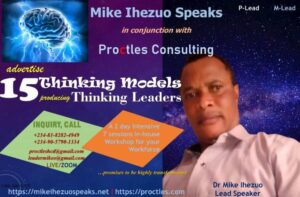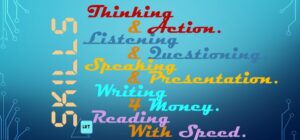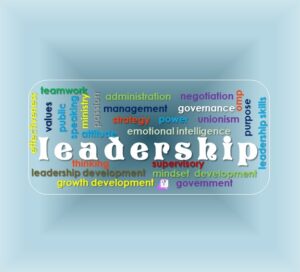Humans all have their ways of making sense of the world. We see a particular situation, digest the information, and react based on our understanding. This is a cognitive process. This cognitive process is built around mental models – the frameworks that shape our thoughts, understanding, and responses. I’m working on Thinking. In this piece, I will like to share six systems thinking mental models that can give you a new perspective on problem-solving and decision-making. Remember, I teach 15 Thinking Models out of 25 regularly – the systems thinking is only one. There are six models in systems thinking itself and they are tools for anyone’s mental toolbox. Each is with a specific purpose to help you unravel complex systems and processes.

Add To Your Thinking Toolbox
Let me show you the power of systems thinking – only two of the six systems thinking models. Please follow me.
- Linear Organization Thinking
My Ordinary Differential Equation [ODE] and Vector Analysis [VA] lecturer, Professor Ette, used to advise us, in his ODE and VA classes that “Life Is Not Linear”. Can I extend it to you? “Organizations are not linear!” Seeing the world in superficial cause-and-effect relationships is tempting, like dominoes toppling in a line. It makes you think or conclude that organizations are linear or there is a linear organization. Superficial cause-and-effect relationships are the heart of thinking ONLY in terms of linear organization. It’s useful when dealing with straightforward situations. But how many things are straightforward? However, life is more complex, more convoluted, and more variegated that requires thinking deeper than visible and immediate cause-and-effect.
For instance, imagine you’re baking a cake. There’s a clear start (mixing of ingredients) and an end (a delicious deli). Linear Organization helps you follow the step-by-step process, ensuring you don’t jump from whipping eggs to baking without first adding flour. Good! Linear thinking and linear organization hold here.
However, life REALITY often involves complex systems that go beyond this linearity. That’s where this mental model comes in.
Thinking systematically beyond Linear Organization involves adopting a broader, more complex way of understanding business, life, and investment dynamics. In this context, linear thinking typically refers to a simplified perspective that assumes a direct cause-and-effect relationship in systems, where a change in one component leads to a predictable change in another. This is the zone of predictability.
Truth be told, businesses, life, relationships, careers, leadership, and markets rarely operate in such straightforward manners. Multiple factors are at play, and the relationships between these factors can be non-linear, recursive, interconnected, or even chaotic.
The following mental models help demonstrate how thinking beyond linear organization can assist in thinking through complex problems in business, life, career, leadership, market, and investing.

- Stock And Flow
Stock and Flow is another thinking model. Stock and flow is a concept rooted in economics but can apply to many life cases and situations. Think of stock as the current state of something and flow as the rate of change [of that thing]. This model helps you understand the dynamics of systems over time. This is home of dynamism.
Let me illustrate: picture your bank’s savings account. Your balance is the stock; the deposits and withdrawals are the flows. If you want to increase your savings, you can either boost the inflow (deposit more) or reduce the outflow (spend less). This model lets you visualize and adjust components to achieve your goals. Our trust operates in the same principle.
The Stock and Flow mental model originates from systems thinking and is used to understand the dynamism of complex systems. In this model, “stocks” represent the elements of the system that can be measured at any point in time, while “flows” are the rates at which these stocks change. The model can be pretty helpful in say business and investing.
In Business: say,
- Inventory Management: Stocks can be considered the inventory a business has at any given point, while flows represent the rate at which inventory is bought, sold, or used. By understanding the relationship between these two factors, businesses can optimize their inventory levels and turnover rates to maximize profitability.
- Cash Flow Management: Cash on hand (stock) and income and expenses (flows) are crucial elements of business finance. A business could have a significant amount of cash on hand but a negative cash flow, indicating more cash is leaving the business than coming in. This could be a sign of trouble soon, even though the current cash stock seems large.
- Human Resources: Employees can be considered as a stock, and hiring, turnover, and attrition rates as flows. Understanding these dynamics can help businesses plan recruitment, retention, and development strategies.

In Investing:
- Valuation: The Stock and Flow model can be used to assess a company’s or an investment’s value. The stock represents the current value, and the flow could represent the company’s earnings or growth rate. Investors can look at these factors to decide whether an investment is overvalued or undervalued.
- Market Dynamics: In the overall market context, the stocks could represent total market capitalization, and flows could represent the rate of money entering or leaving the market. This can help investors understand market trends and sentiment.
- Commodities Investing: For commodities like gold, silver, or Bitcoin, the Stock-to-Flow ratio (the amount of the commodity currently available divided by the amount produced annually) can be used to predict future prices. A higher ratio suggests a lower inflation rate of the commodity’s supply, potentially increasing its price over time.
For you to use the Stock and Flow model effectively, it’s crucial to identify the essential stocks and flows within the system you’re analyzing, measure them accurately, and understand how they influence each other. This can provide a more holistic understanding of the system’s dynamics and help guide your decisions.
Let me stop on these 2 only among others.
Dr Mike Ihezuo is a thinker and an executor. He teaches 25 Thinking Models in which System Thinking is 1 out of 25. Why not produce THINKING MANAGERS, THINKING ADMINISTRATORS, and THINKING LEADERS from your team and workforce? Mike can help you. Reach him through any of the online handle https://mikeihezuospeaks.net/meet-mike-live, #LeadershipXcellence, @mikeihezuospeakshq, @MikeOIhezuo, https://leadershiproundtablehq.com/adinquiry, leadermikeo@gmail.com.



